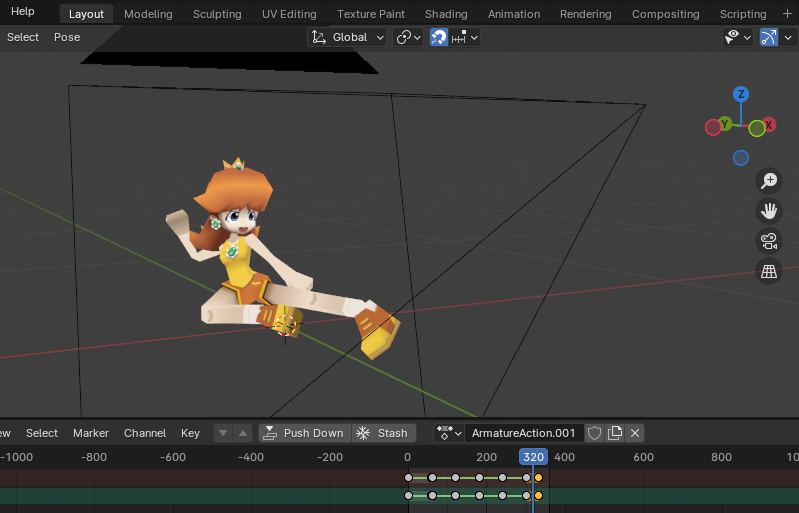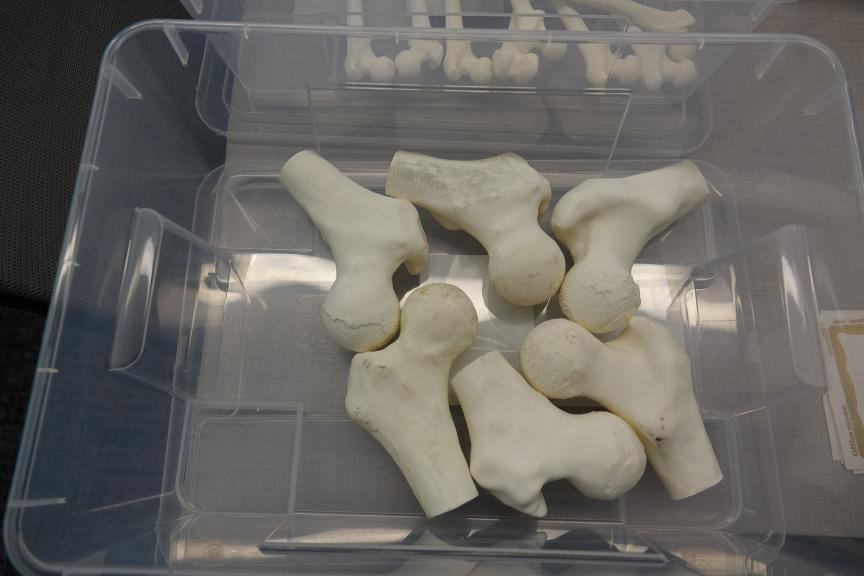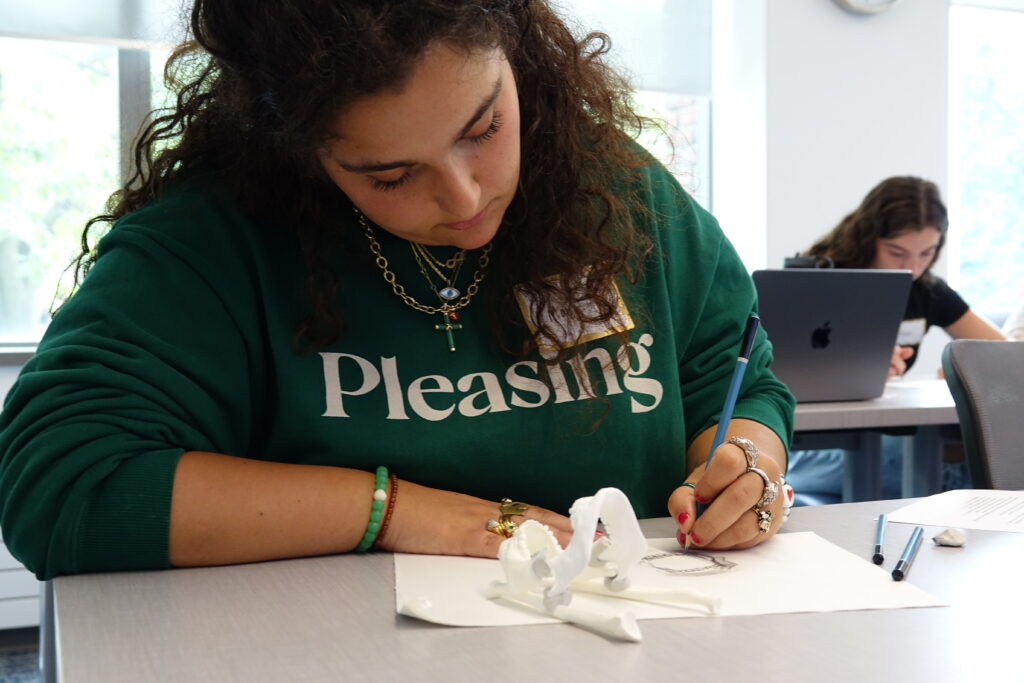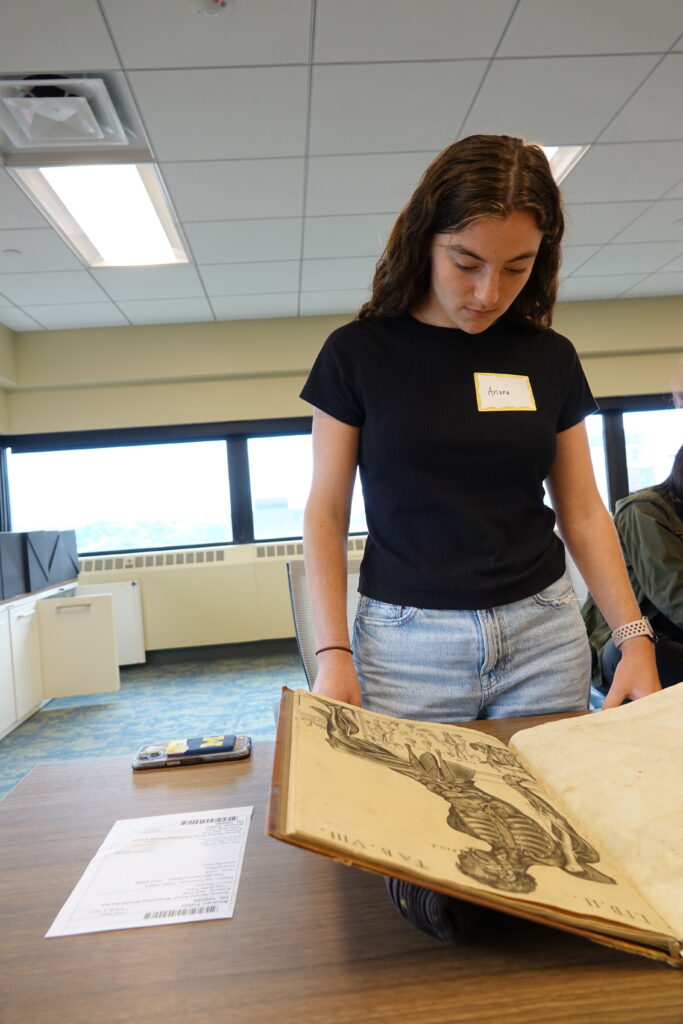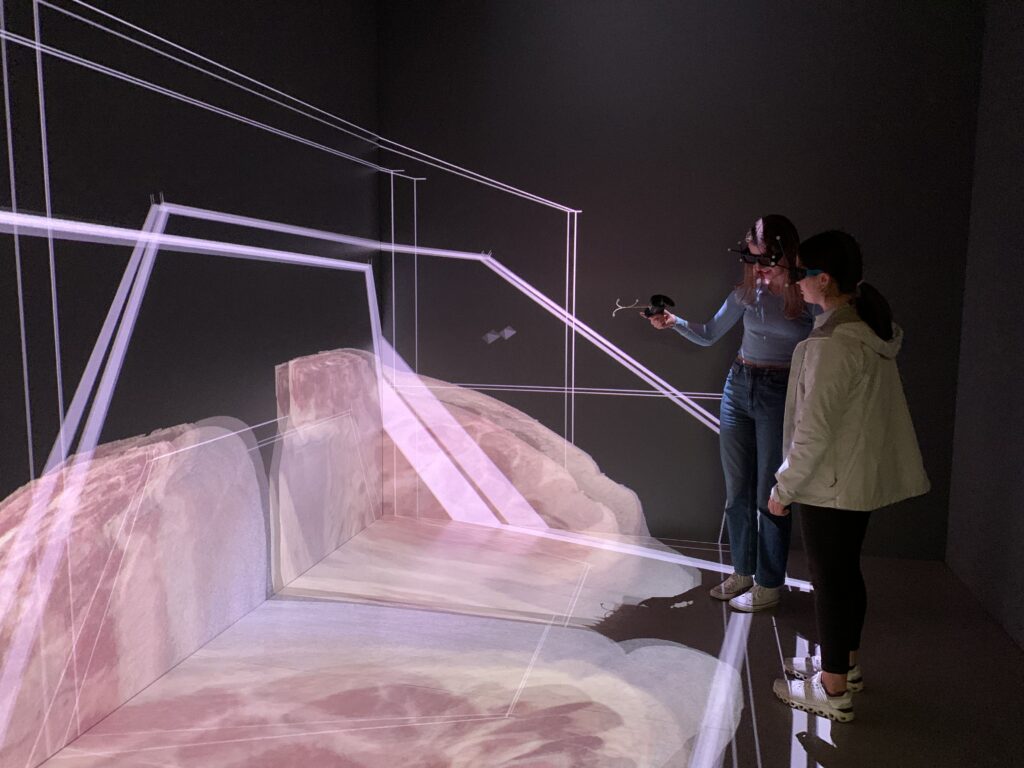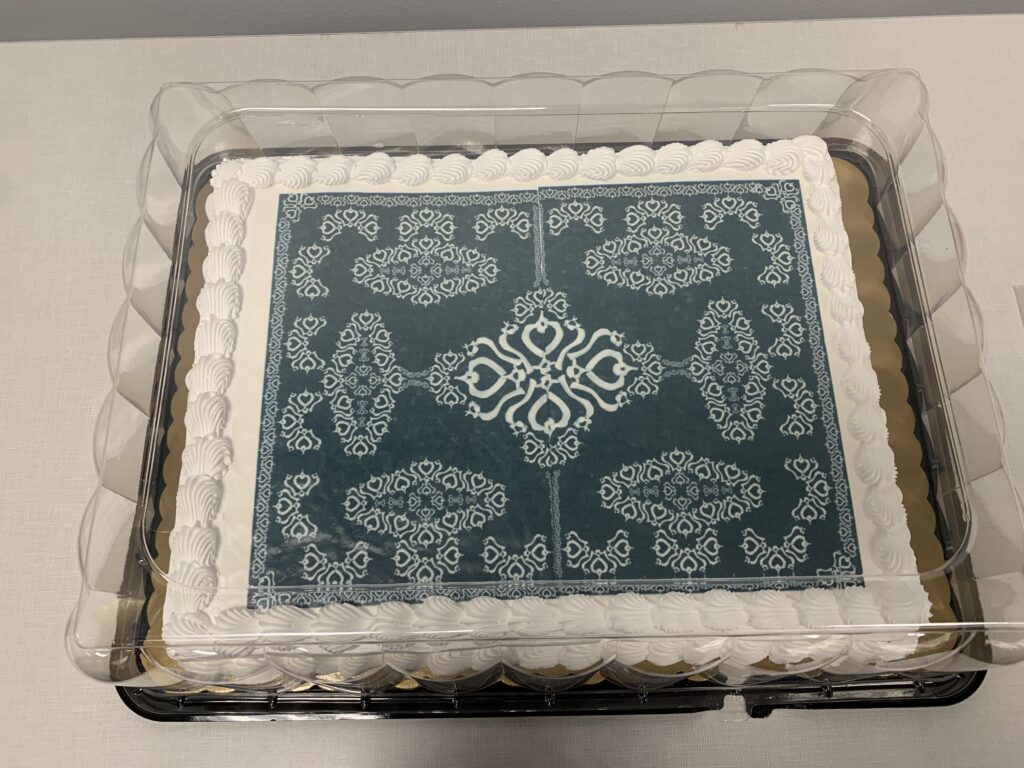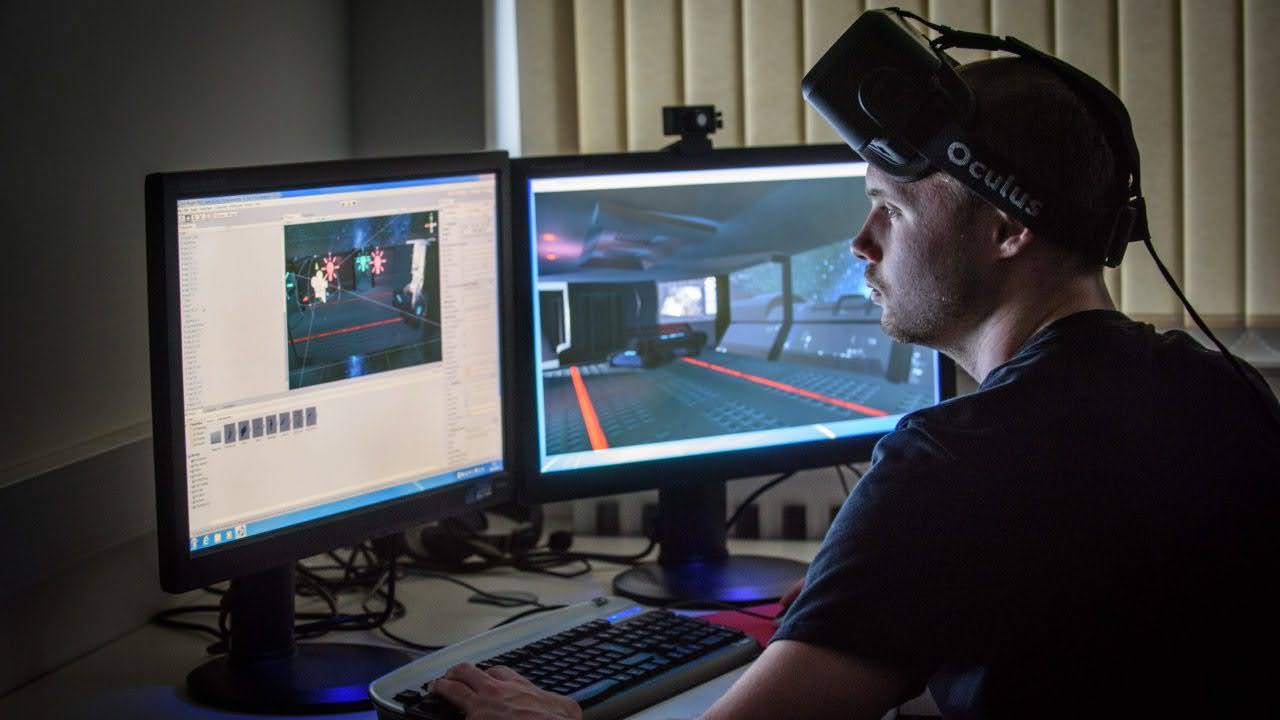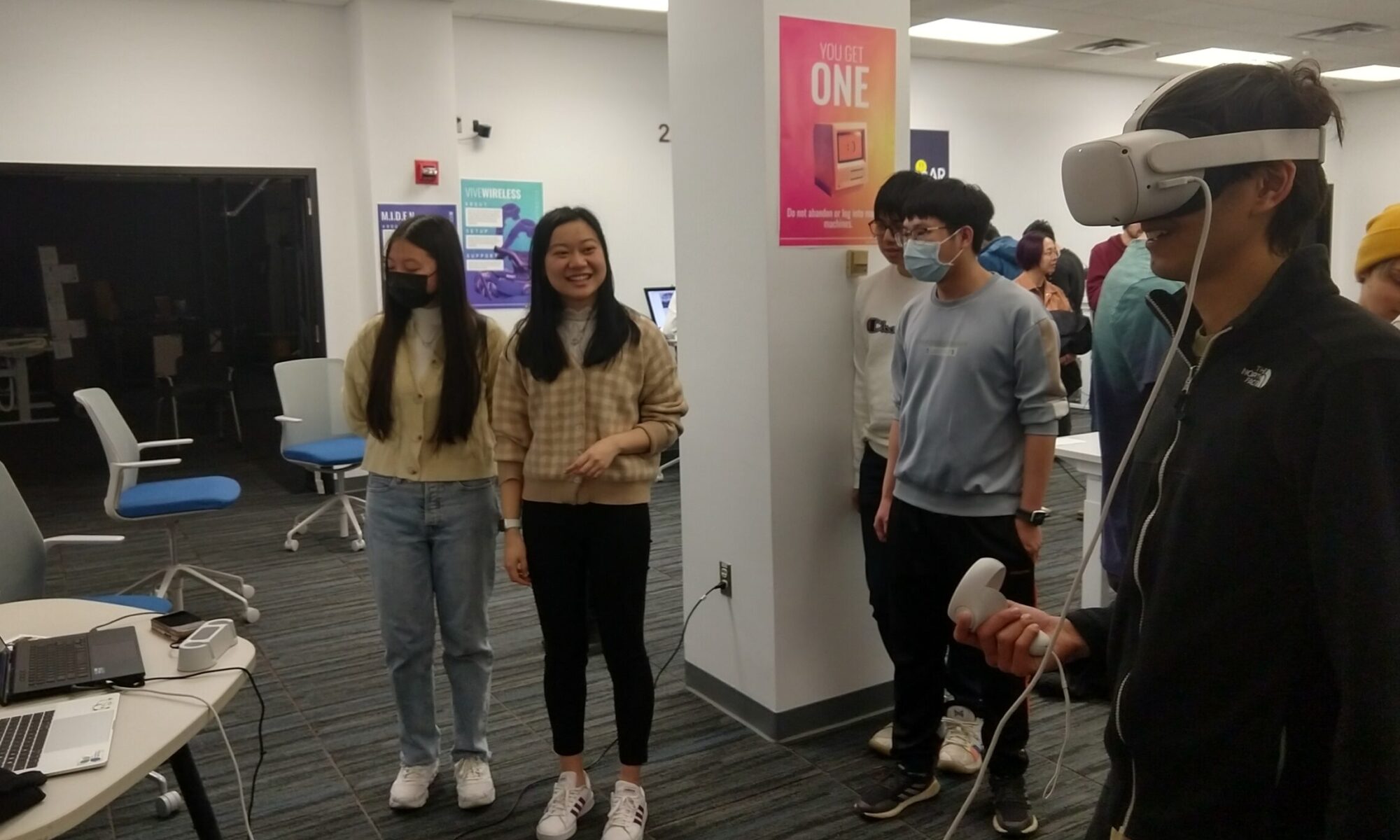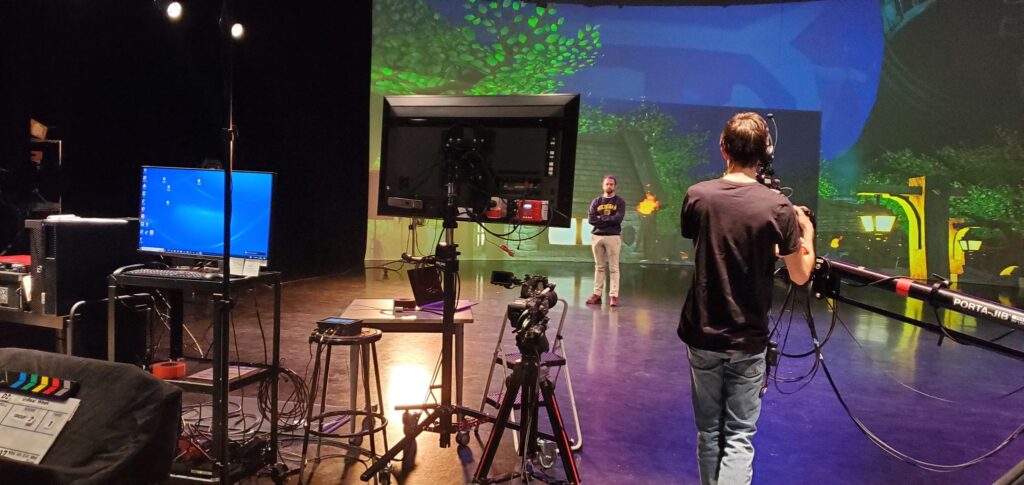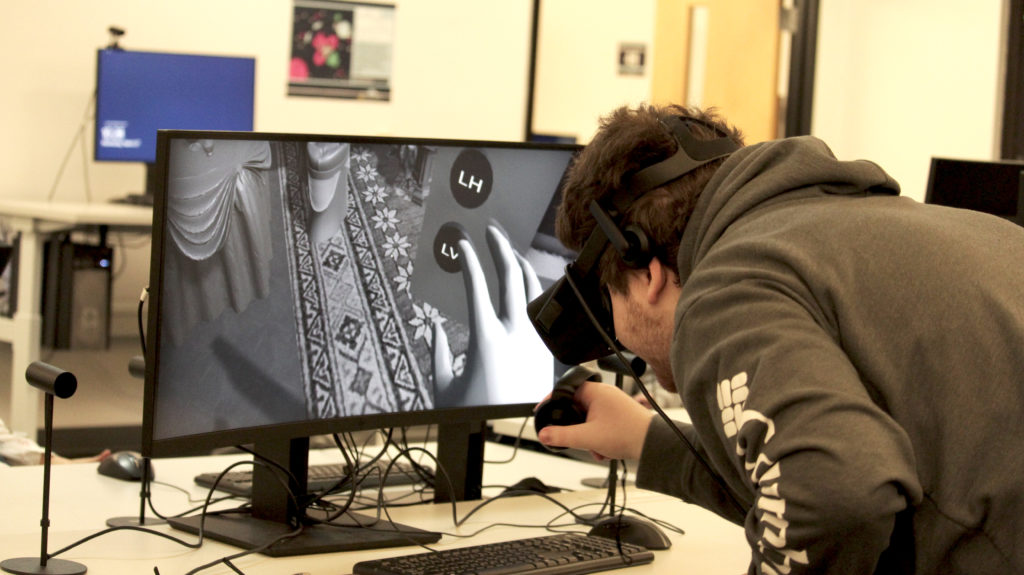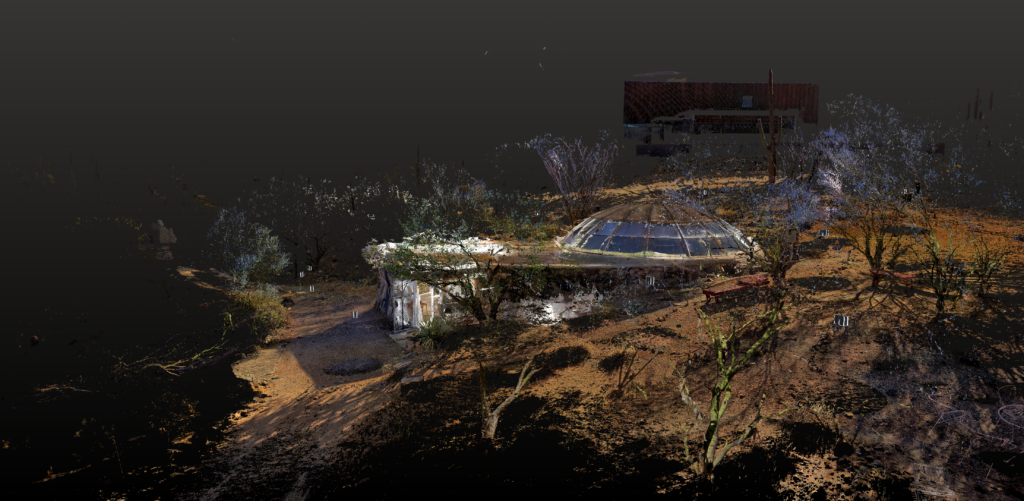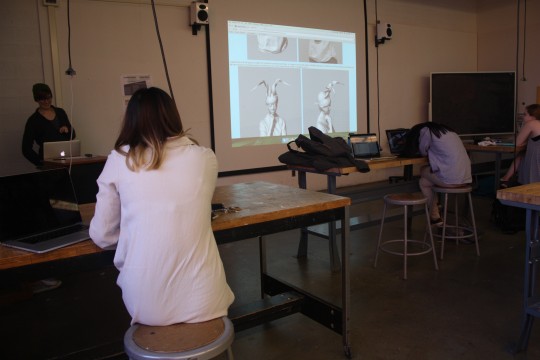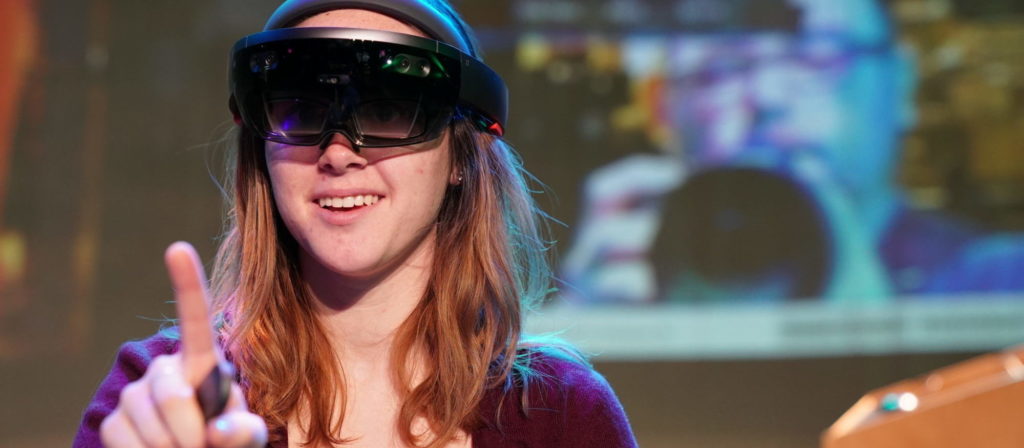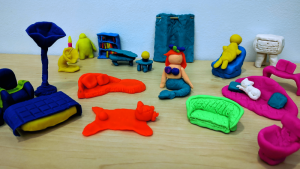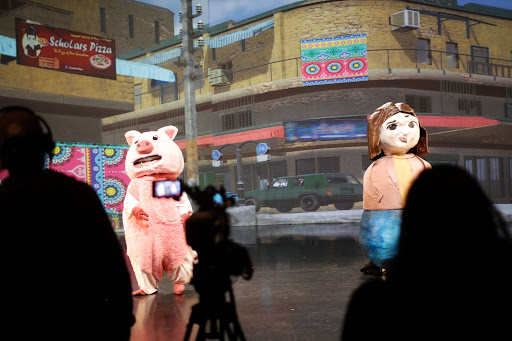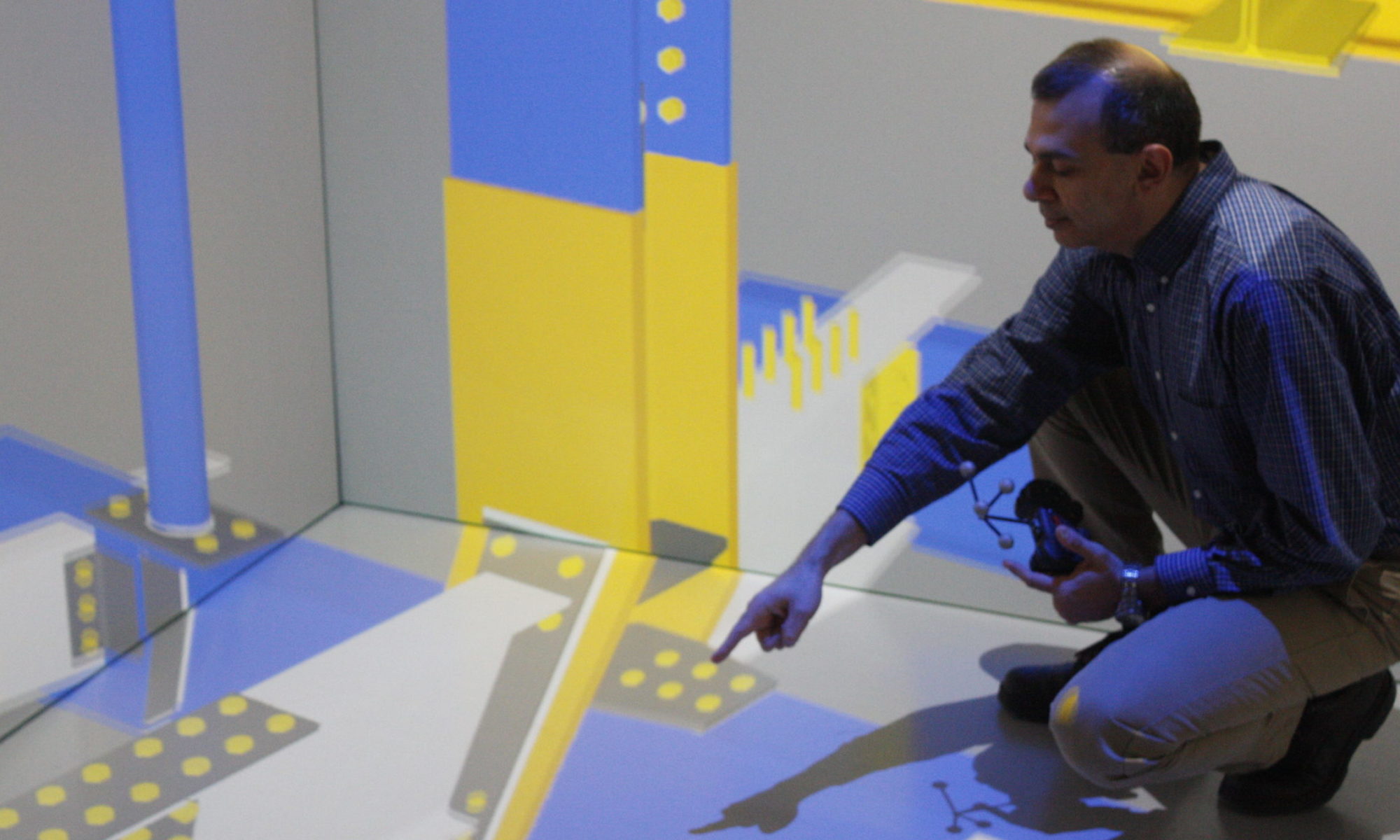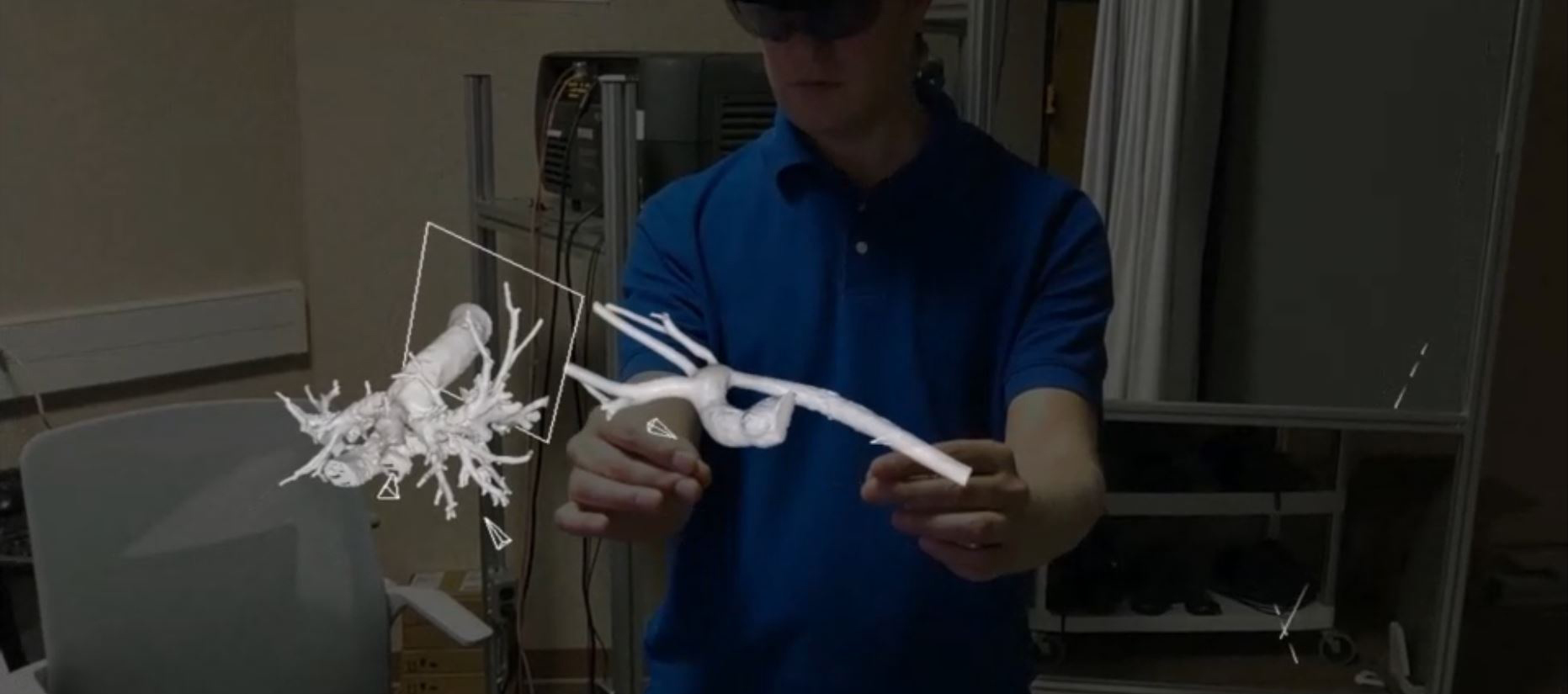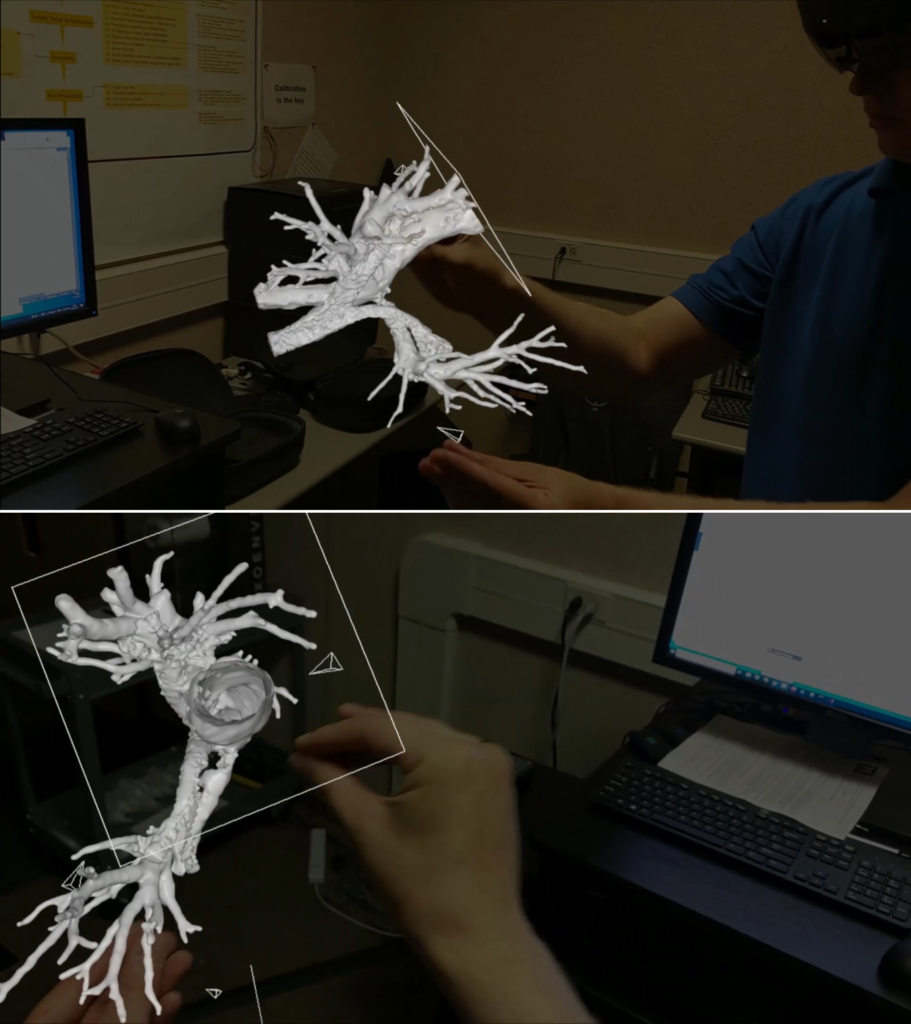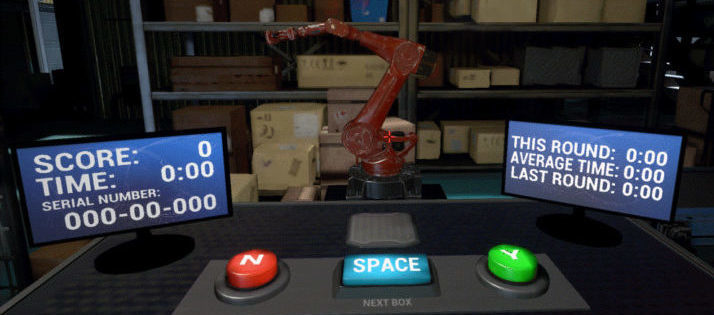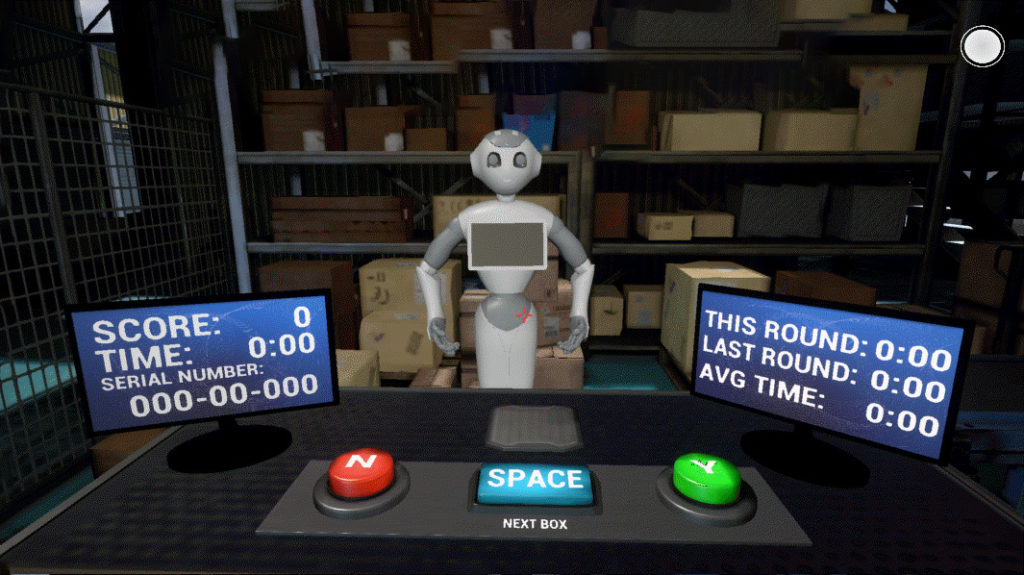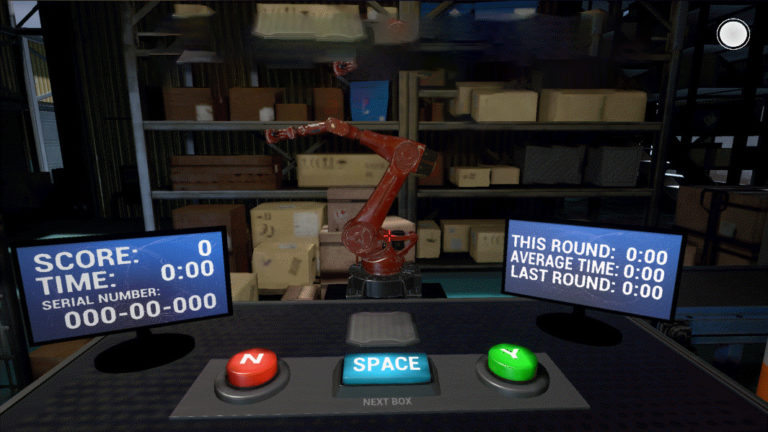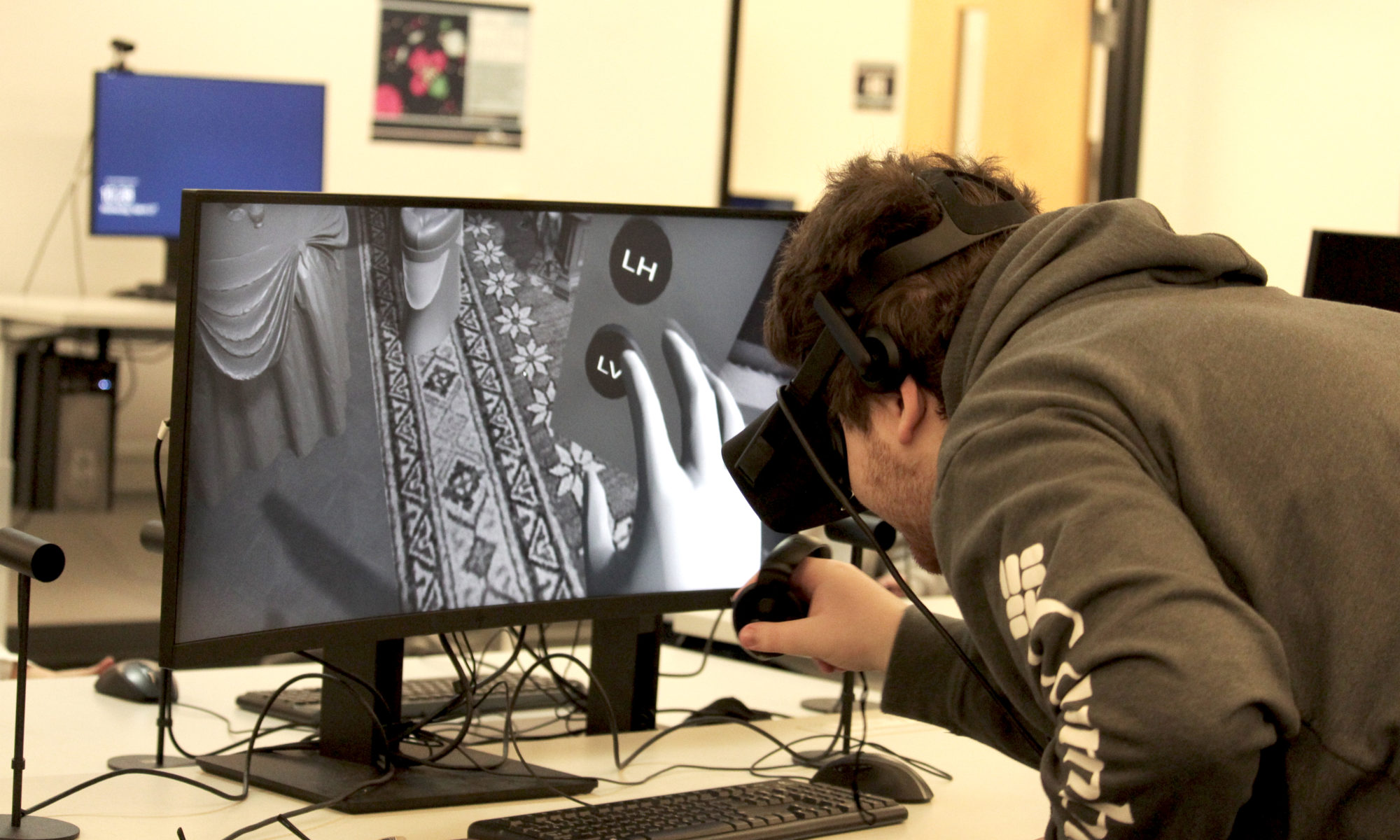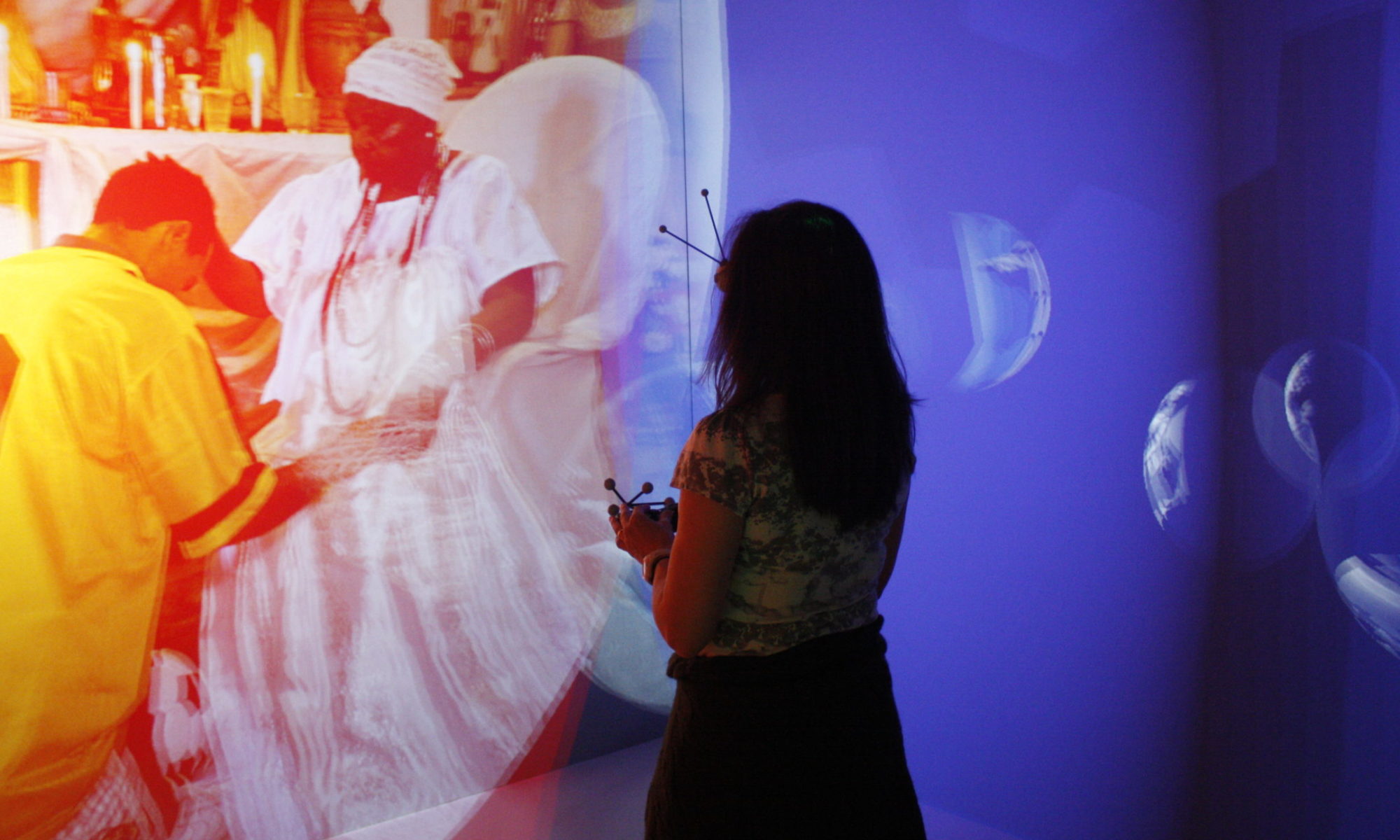Delving into the art (instead of science) of anatomy
New XR Course for FAll 2024
The first thing the students saw were the bones.
There were more than a hundred of them, stacked neatly in plastic bins on a long table in the front of classroom 2060. Some were long and slender, others bulbous and asymmetrical. All had the same glossy sheen.
From far away, they resembled delicate china figurines. Up close, it was easier to tell that they were 3D-printed versions of the same bones you’d find in a human pelvis or mouth or arm.
The students in the “Art of Anatomy” mini-course rummaged through the bone-like objects, serious expressions on their faces as they deliberated which to choose.
Their assignment that day was to create a sculptural arrangement. It could be anatomically correct; it could resemble nothing that you’d typically find in a skeleton. Then they had to take a picture of their designs and draw the shadows they’d made, using graphite pencils or charcoal.
The activity was intended to explore the body from a different perspective, to discover the angles and shapes its parts could make, and to ask the question that lay at the core of every session in this course: How does interacting with models of our anatomy, which try to approximate the experience of real human bodies, compare to encountering the real thing?
The next hour or so was nearly silent, except for the clunking of the tiny bones and the scratching of the pencils. Maya Moufawad, a pre-dental and art major, had chosen two halves of a jaw, complete with teeth. She fit them together and then affixed them to two smaller bones, making it look like the Flintstones had gotten their hands on a dental mold and decided to display it as art, using bones as the frame.
Movement science student Abby Kramer went with a thoracic vertebra, a lumbar vertebra, and a sacral bone. She liked being able to hold the bones, to turn them around and flip them upside down to better understand their structure and proportion.
She connected the lumbar vertebral bone directly with the sacrum, which would have been in the appropriate location anatomically. But, as she noted later: “There were still a lot of unknowns.” You couldn’t fully understand the body by looking at these bones. They were, both literally and figuratively, missing connective tissue.
“We’re trying to get them to understand that even the most factual anatomical model is still a fiction,” says Jennifer Gear, an art history and movement science lecturer who co-designed and taught the course. “It’s still removed from the body. In what ways and for what reasons? How do you stop thinking about these things as objective truths — but rather, to see them as believable fictions?”
***
When movement science student Regan Lee walked into the Capuchin Crypt in Rome, she, too, was fascinated by the bones.
In this case, they were real human bones from deceased Catholic friars, used to adorn a mausoleum that is like few others on Earth. The crypt is literally decorated with human remains — skulls framing archways, tibias and femurs arranged in elaborate crosses and mandalas on the walls and ceilings.
At the time, Lee was on a day trip during movement science associate professor Melissa Gross’ class, “Art and Anatomy in the Italian Renaissance,” for which students travel to Italy and use the classical statues and paintings of the Renaissance era as a guide to learning about anatomical structures.
As she walked away from the unique crypt, Lee was “nerding out.”
“I think everyone should see this,” she told Gross.
Gross had a different idea.
“What if we made this a class?” she pondered. “Let’s have students make their own art with the bones they’re used to looking at. We could 3-D print bones that the students could think critically about.”
“That’s crazy,” Lee responded. “Are you serious?”
***
Gross was indeed. She’d 3-D printed a small number of bones for previous anatomy courses, so she knew it could be done. And she’d spent her career creating innovative interdisciplinary courses in an attempt to engage students, stimulating them to learn in ways that worked better for them.
Together with Gear, she’d applied that paradigm of thinking to create the “Art and Anatomy in the Italian Renaissance” course Lee was so enjoying. She thought she and Gear could build off that successful partnership and come up with a class that challenged students to revisit their preconceptions about both art and the body.
The pair started brainstorming. They wanted to teach a projects-based class — one with no tests, plenty of guest speakers, and lots of hands-on activities. They wanted to take students to different locations: the Hatcher Library’s Special Collections Research Center to look at Renaissance-era anatomy books, the Taubman Health Sciences Library to examine digital cadavers via the interactive Anatomage table, the Visualization Studio at the James and Anne Duderstadt Center on North Campus to play around with bones in virtual and augmented reality.
“I think of the classroom as a sandbox,” Gear says, “and I’m going to bring my best toys. Because I’ve got to be there with the students every day, too, and I don’t want to be bored. So I try to think about what would be fun to do, and this was a class that could lend itself to fun things.”
They wanted to ground the course in an arts-based approach, using critical thinking to respectfully challenge assumptions and foster dialogue that valued different perspectives. To do so, they planned to advertise in different schools on campus to attract students with varying backgrounds.
“Our goal was to open the students’ minds to other ways of seeing, of moving, of experiencing,” Gross says.
***
Coincidentally, the U-M Arts Initiative was looking for proposals for its Arts & Curriculum grant, which promotes the integration of arts into course development and teaching. In November 2022, the initiative gave its approval — and $19,611 worth of funds — to support Gross and Gear’s seven-week-long mini-course.
The pair used some of the grant money to pay Lee, who began the arduous task of printing the bones. Even the smallest ones took hours, and the printers often malfunctioned. Lee stuffed the ones that failed to print in her bag, and they clanked around as she walked.
“Even my apartment had bones everywhere,” Lee says.
Eventually, most of the bones made their way to SKB’s classroom 2060, as did 20 students — some from Kinesiology, some from Engineering, some from the Stamps School of Art and Design.
The students drew the bones, sometimes asking those who specialized in art to help the others portray the structures accurately.


